Arthur Mamou-Mani shares unseen drone footage of Burning Man project Galaxia at VDF
As part of today's VDF collaboration with Arthur Mamou-Mani, the French architect speaks about his Galaxia temple at the 2018 Burning Man festival and shares previously unseen aerial footage of it.
Mamou-Mani has shared the drone footage of his Galaxia project ahead of a virtual-reality tour of his Burning Man projects, which will take place today at VDF at 4:00pm UK time.
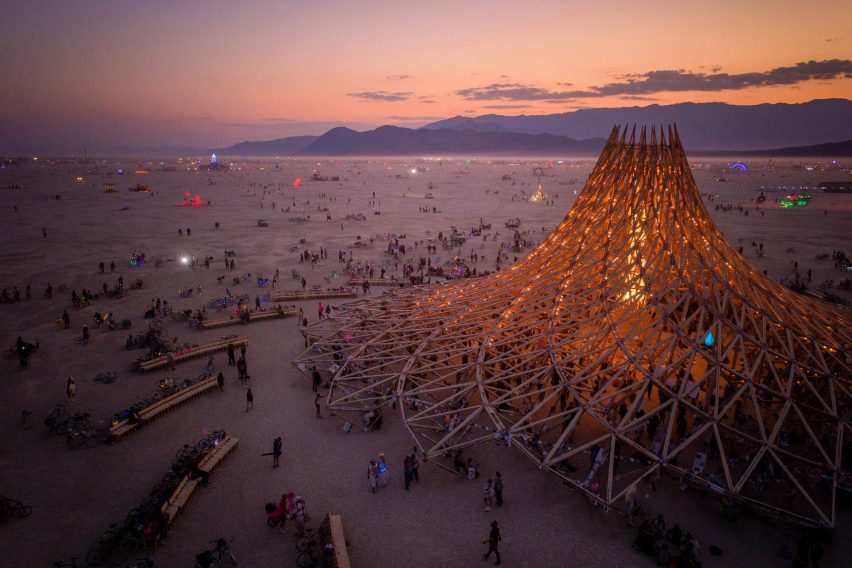
Mamou-Mani designed Galaxia, which is formed of 20 timber trusses that converge as a spiral towards one point in the sky. The triangular trusses form different paths towards a central space holding a giant 3D-printed mandala, the heart of Galaxia.
The theme of the festival that year was "i-Robot, a reference to Isaac Asimov's 1950s book. The writer's 1982 sequel, Foundation's Edge, features a planet called Gaia where all living things are connected, which gave Galaxia its name.
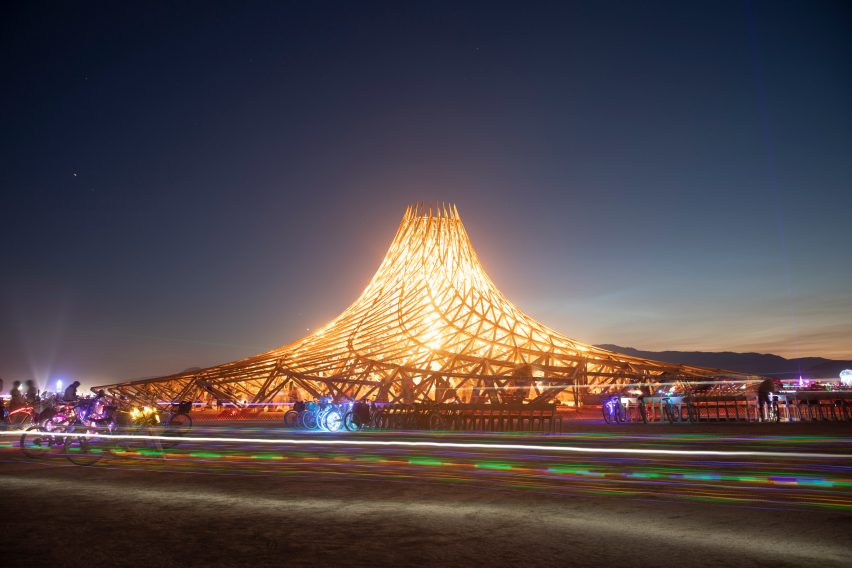
"The inhabitants of Gaia use the pronoun "I/We/Gaia" and share a common brain, people are known as 'parts of Gaia,'" Mamou-Mani told Dezeen.
"Galaxia is later described as the galaxy-wide entity of this complete state of synergy. I believe the idea resonated with that of a secular and contemporary temple for a worldwide community – temples essentially being spaces to connect people."
"One of the 10 principles of Burning Man is radical inclusion so it was important to design a space that had no doors, no walls, no hierarchy, linking us with each other and to the wider universe above," he added.
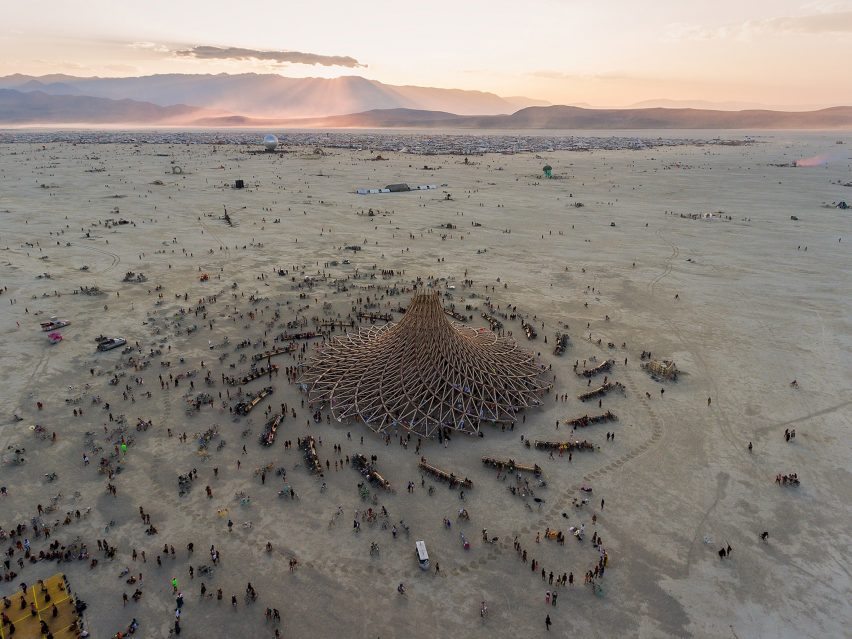
The resulting temple was a spiralling wooden pavilion designed using 3D software. "Soon after founding our studio, we were asked to work on a hotel for the astronauts of Virgin Galactic," Mamou-Mani explained.
"We grew many three-dimensional versions of these Galaxy-like patterns, linking them with more parameters like the sun and the structural behaviour of each member. This is the same year I first went to Burning Man with our University of Westminster Students (and co-tutor Toby Burgess). Although the Virgin project did not happen in the end, I kept thinking that this approach would work well there."
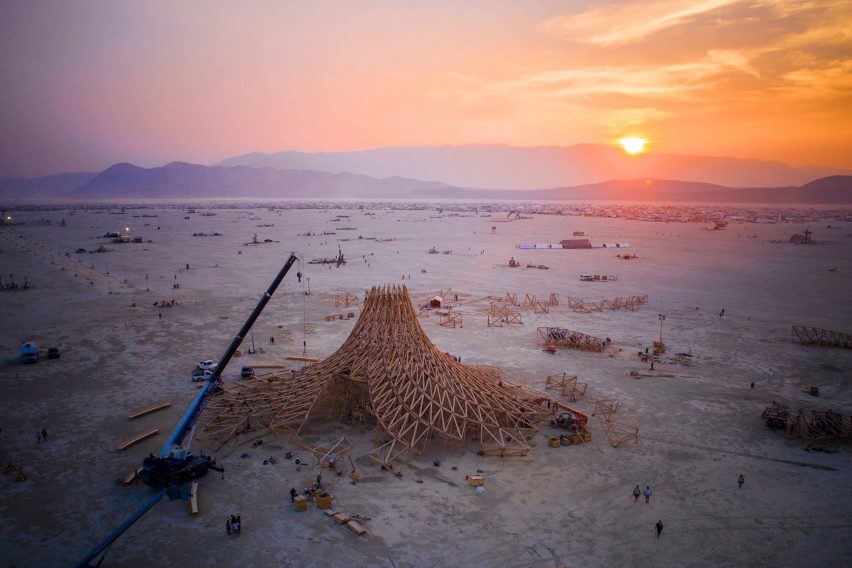
After six months of prefabrication, the structure was built by 140 volunteers over 22 days in the Nevada desert, as seen in drone footage shot by Matt Emmi and shown here for the first time. "The project was a logistical challenge and required a very dedicated and structured team," Mamou-Mani said.
"Our tasks varied from food preparation to welcoming volunteers in our build spaces and planning our camp. Although we had some trained builders in the team, most people came from other professions and joined for very different personal reasons," he added.
"Some came because they lost someone and wanted to honour them, some wanted to let go of something and others just came because they were touched by previous temples," the architect said.
At the end of Burning Man, the Galaxia building was set aflame, as shown in Terry An's film (above.) It was an emotional moment for the architect, who had experienced his own catharsis when seeing Greg Fleishman's Temple of Whollyness in 2013.
"I went through intense episodes of depression in my life and to find a space in which it was OK not to be OK, helped me a lot," Mamou-Mani said. "Burning the temple is part of the ritual of letting go and happens in silence in front of 70,000 people."
"When building the temple I knew this was going to be beyond me, that it was a collective effort to help people find closure. This project is a journey bringing people together, burning it did not burn what it represented."
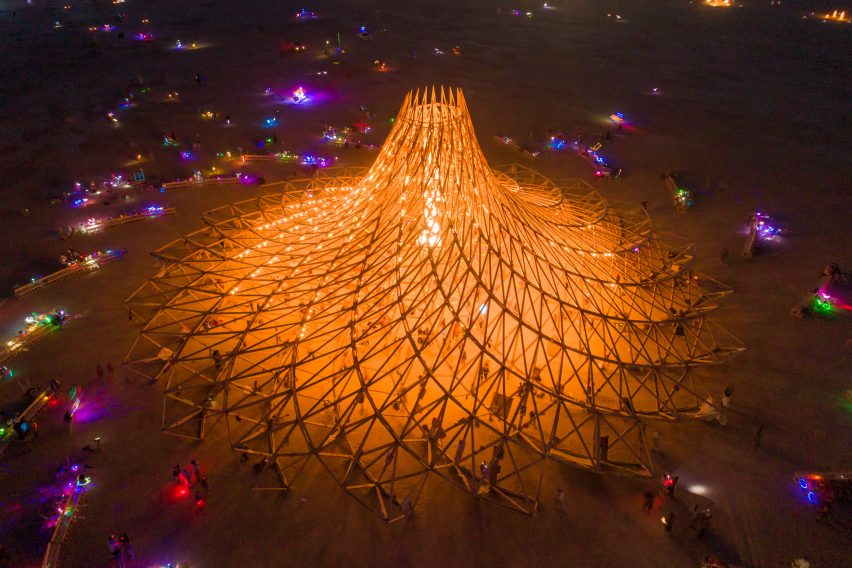
The burn made Mamou-Mani wonder if there could be alternatives to burning, "a ritual in the disassembly of a project," he said, which became the basis for the timber amphitheatre Catharsis.
Catharsis won't be physically installed, as this year's Burning Man was cancelled due to the coronavirus pandemic, but can be visited as part of our virtual reality tour with Mamou-Mani at 4:00pm this evening.
Photography is by Jamen Percy unless otherwise stated.
Project credits:
Architecture: Mamou-Mani Architects (Arthur Mamou-Mani, Maialen Calleja, Aditya Bhosle, Bilal Mian, Sandy Kwan)
Engineering: Format Engineering (Stephen Melville, James Solly, Marco Pellegrino, Sara Andreussi)
Scaffolding: DHC Charles Engineering (Robin J. Ko, Brian Hilier)
U.S. leadership team: Aaron Porterfield (U.S Lead), Mikki Assada (site captain), Bruce Schena (scaffold Lead), Dave Keane (build Lead), Benoit Bergeret (camp lead), Jessica “gravity” Meisman (Kitchen Lead), Nick Moser (altar lead), “Sparklepony” Paul Franke (metal lead), Kirsten Straight (Reno site lead), Kai Dalgleish (SF site lead), Micah Turner (3D printing), Jocelyn Simmons (graphic design), Dillon Nicholson and Desirée Tavera (Fundraising)
Light design: Gerald Spencer, Bashir Ziady, Sage Gunderson (Teardrops).
